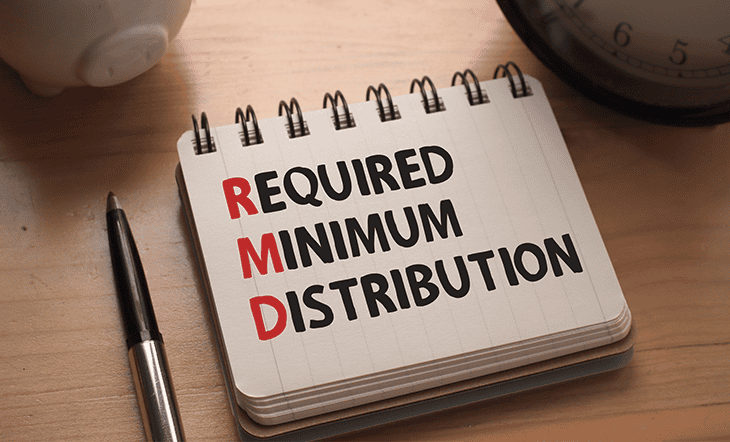Home > Retirement > 7 Things to Keep in Mind When Considering a Roth IRA Conversion
7 Things to Keep in Mind When Considering a Roth IRA Conversion
The Individual Retirement Account (IRA) is a tax-advantaged retirement account that offers tax savings and the opportunity to grow your money through multiple investments in instruments like bonds, certificates of deposits, mutual funds, stocks, and more. There are different types of IRAs, such as a traditional IRA, Roth IRA, SEP IRA, and SIMPLE IRA. There are reportedly more than 60 million IRAs in the country, with an average balance of $157,000 as of 2022. This is only likely to increase as the contribution limits for the account are set to increase from $7,000 in 2022 to $7,500 in 2023.
Small businesses or self-employed individuals can use the Simplified Employee Pension (SEP) IRA and the Savings Incentive Match Plan for Employees (SIMPLE) IRA. The Roth or traditional IRA can be used by individuals. Further, out of all the different types of IRAs, the Roth IRA remains a preferred choice, primarily for its tax benefits. Traditional IRAs allow you to make tax-deductible contributions, so your contributions are tax-free, and your withdrawals are taxed in retirement. A Roth IRA is the opposite of a traditional IRA, wherein your contributions are not tax-deductible, but your withdrawals are tax-free in retirement.
You can choose any of these accounts depending on your profession and needs. You can also consider a Roth IRA conversion if you wish to rollover your other IRAs to a Roth account. However, there are some things to note before you do so. You must also be aware of the Roth conversion limits and rules that may affect your withdrawals and other retirement plans. Consult a professional financial advisor who can help you understand how a Roth IRA account might fit in your retirement plans.
What is a Roth IRA conversion?
A Roth IRA conversion refers to the transfer of cash and other assets from a retirement account like the 401k and traditional, SEP, or SIMPLE IRA to a Roth IRA. A conversion can be partial or whole. A total conversion is when you convert all of your money at once. On the other hand, a partial conversion is when you roll over small portions of your IRA funds in phases.
What are the 7 things you should keep in mind when considering a Roth IRA conversion in retirement?
1. Understand the five-year rule:
When you roll over your funds to a Roth IRA, you cannot withdraw your funds for up to five years from the year of conversion. Your funds are locked-in, and any withdrawal made during this time is seen as an early withdrawal. As a result, a penalty of 10% may be imposed on any money drawn before the five-year period. The five-year rule will apply to the entire amount if you make a complete conversion. Likewise, the five-year rule will apply to every conversion, if you make a partial conversion. Typically, the rule is imposed on January 1 of the year the conversion is made. Suppose you make four partial conversions in four years, this means that the five-year rule will be imposed for each of these conversions.
The five-year rule can be a considerable problem in retirement because you are much older during this phase of life. Waiting for five years at the age of 30, 40, or even 50 may not be as hard as you have several other sources of income to rely on. However, the same can be restrictive in retirement as you would have fewer income sources. If you are entirely dependent on your IRA income, a waiting period of five years can be detrimental. In such a case, it may be advised to thoroughly plan your Roth IRA conversion beforehand to avoid any issues later or avoid it altogether.
2. Know the tax liabilities of your state:
The primary purpose of using a Roth IRA is to lower your tax dues in retirement. However, there are several ways to do this. One of the most effective ones is to choose a state with a low tax cut. States like Alaska, Florida, South Dakota, New Hampshire, etc., do not impose any income tax. If you live in a state with no income tax, you will not be taxed on your distributions from a traditional IRA. In such a case, you will not benefit from a Roth conversion. Consider a conversion only if you have something substantial to gain from it. If you are presently in a state that imposes income tax but are planning to move to a state with no tax, you will end up spending more money than you save from a conversion. A conversion will cost you tax in the present since you are in a state that imposes a tax, and your withdrawals, once converted, will not be taxed later since you will not be in a state that imposes an income tax.
3. Consider the Roth IRA conversion ladder:
The Roth IRA conversion ladder is nothing but a partial conversion. As mentioned above, a conversion can be made in whole or in installments. Whenever you make a conversion, you have to pay taxes in the same year as the conversion. This is primarily because a Roth IRA is exempt from any taxes upon withdrawal, whereas other accounts are not. So, you must clear all your tax dues at the time of conversion. In the case of a complete conversion, you owe tax on the entire account. However, if you choose a partial conversion, also known as the Roth IRA conversion ladder, you break down your tax liability. The smaller the conversion amount, the less tax you pay in the concerned year. The tax payments are spread over the years, and you get to comfortably convert your funds with more minor tax cuts without impacting you all at once.
4. Know you may pay a 3.8% Medicare surtax
Your Modified Adjusted Gross Income (MAGI) is an important consideration when contemplating a Roth IRA conversion. The premium for Medicare Part B and Part D is adjusted based on your MAGI from the last two years before enrollment. Moreover, people with a MAGI of more than $250,000 are subject to a Medicare surtax of 3.8%. This surtax can be applied to income from capital gains, interest and dividends, rent, annuities, etc. The conversion amount from a Roth IRA is also seen as an income. If you convert to a Roth IRA, the Internal Revenue Service (IRS) will consider it an income and increase your Medicare premium. It will also increase your surtax thresholds.
SPONSORED WISERADVISORChoosing the right financial advisor is daunting, especially when there are thousands of financial advisors near you. We make it easy by matching you to vetted advisors that meet your unique needs. Matched advisors are all registered with FINRA/SEC. Click to compare vetted advisors now.
5. Understand the tax liability of your beneficiaries:
Your retirement savings will find a place in your will eventually. Therefore, it is important to understand the implications of your decisions. A Roth IRA conversion can be a good idea in retirement as it removes tax liabilities from your beneficiaries. In the case of a traditional IRA, the beneficiary must withdraw all the money from the account by the tenth death anniversary of the original account owner. This may compel your inheritors to withdraw the money sooner than they need it, which in turn, can increase their tax liabilities. They will have little say in how or when they can use this money, and the inheritance may be forced on them irrespective of their financial plans. However, a Roth IRA has no such rule and is much more flexible.
6. Know there are no Required Minimum Distributions (RMDs)
One of the benefits of a Roth IRA conversion post-retirement is the absence of RMDs. RMDs are mandatory withdrawals that you must start making once you reach the age of 72 from traditional IRAs, 401ks, 403(b)s, etc. However, the Roth IRA is exempt from this. So, you have autonomy over how and when you use your funds. With traditional accounts, RMDs can be a problem as you are forced to withdraw your money and pay tax on it. You would also need to calculate the minimum amount to be withdrawn each year. If there are any discrepancies, you will be taxed by the IRS.
7. Plan your Social Security benefits:
While you cannot use your Social Security benefits to contribute to your Roth IRA, you can still use them to your advantage by planning your finances smartly. If you are considering a Roth IRA conversion post your full retirement age, you would be able to withdraw your Social Security benefits. Now, you can use this money to cater to your lifestyle needs and use the rest of the money that you save to maximize your IRA contributions. This will offer you a chance to build up savings for the future years of retirement and ensure optimal use of your Social Security benefits check too.
Some other things to know about a Roth IRA conversion
- In the case of multiple Roth IRAs, the total contribution for all accounts cannot exceed the yearly contribution limits set by the IRS. For 2022, this is $7,000 with catch-up contributions. For 2023, this has been increased to $7,500.
- There is no limit on the number of conversions you can make in a year. You can make as many conversions as you want. However, you have to abide by the contribution limits.
- Irrespective of when you make a Roth conversion (before or after retirement), you will owe taxes on your previous contributions. So, plan accordingly.
- At any given time, your contributions cannot exceed your earnings made in a single year.
To conclude
A Roth IRA conversion is one of the most helpful things that you can consider if you are looking to lower your tax liabilities in retirement. However, it is crucial to understand that a conversion does not mean zero tax. You have to pay tax on your previous contributions. Therefore, planning your conversion is essential. Consider ladder conversions or saving enough to ensure a high tax liability does not impact you. It may also be advised to consider a Roth conversion in a year where your other tax liabilities are low so as not to land up in a high tax bracket. Further, look at all of your retirement assets, such as stocks, bonds, mutual funds, real estate, and others, when planning your retirement needs. You must also consider other retirement savings accounts like the employer-sponsored 401k to boost your savings and diversify your retirement investment portfolio. This can help you strengthen your retirement financially and eliminate potential shortfalls.
Hiring a financial advisor can also be recommended to ensure a foolproof retirement plan. Use the free advisor match service to find 1-3 highly qualified and vetted financial advisors that are suited to meet your financial requirements. All you need to do is answer a few simple questions about yourself and the match tool will help connect you to advisors that are suited to meet your financial needs.
For further information on creating a suitable retirement plan for your unique financial requirements, visit Dash Investments or email me directly at dash@dashinvestments.com.
About Dash Investments
Dash Investments is privately owned by Jonathan Dash and is an independent investment advisory firm, managing private client accounts for individuals and families across America. As a Registered Investment Advisor (RIA) firm with the SEC, they are fiduciaries who put clients’ interests ahead of everything else.
Dash Investments offers a full range of investment advisory and financial services, which are tailored to each client’s unique needs providing institutional-caliber money management services that are based upon a solid, proven research approach. Additionally, each client receives comprehensive financial planning to ensure they are moving toward their financial goals.
CEO & Chief Investment Officer Jonathan Dash has been covered in major business publications such as Barron’s, The Wall Street Journal, and The New York Times as a leader in the investment industry with a track record of creating value for his firm’s clients.
Other posts from Jonathan Dash
Things You Should Know About RMDs if You Are Turning 73
Retirement accounts like the 401(k) and the Individual Retirement Account (IRA) are broadly classified as traditional, and Roth based on their taxability....
Should You Keep Your Money with Your Employer’s 401(k) Plan After You Retire?
One critical financial decision looms large as you approach retirement - how does a 401(k) work when you retire?...
6 Reasons Your Retirement Plan Might Change and How to Prepare For it
Planning for retirement is an essential part of securing a financially stable future. It can help you live...




